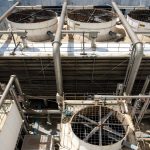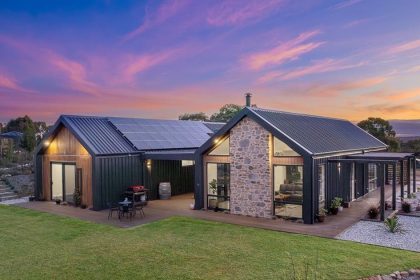Recent changes to the National Construction Code have created a condensation conundrum for Aussie builders as they try to comply with the latest rules and regulations.
Updated energy efficiency and condensation mitigation requirements came into effect in May as part of the latest round of 2022 NCC adoptions.
However, the latest NCC rules have created a challenge for home builders in some regions as they simultaneously juggle reducing condensation while making properties more insulated than ever before.
By raising the mandatory requirements of new build’s energy efficiency scores, builders are now mandated to ensure homes are better insulated and more “airtight” than ever before, making it even harder for heat or cold air to escape the home.
However, those changes make it even easier for condensation to build up in parts of the property, thus requiring better ventilation to prevent damage to the property – A double-edged sword.
NCC changes drive technological change
Minimum condensation mitigation strategies have become mandatory in parts of New South Wales, Victoria and Tasmania, with builders required to construct energy-efficient homes, including condensation-cutting standards.
Despite these challenges, the changes have provided an opportunity for ingenuity as the sector engineers new solutions.
Vent-A-Roof is one of those developments, a concealed metal roof ventilation system specifically designed to improve the home’s energy efficiency while mitigating condensation, humidity and mould.
Vent-A-Roof National Sales Manager Chris Cuschieri told Build-it that he sympathised with builders who are left reconsidering their roofing options after the latest round of new NCC changes.
“The thing with condensation is, you can’t eradicate it; it’s just a naturally occurring phenomenon. All you can do is try to manage it,” he said.
“The new standards have come in to say you have to ventilate to a minimum standard.”
“And while doing that, we still have to increase energy efficiency by locking everything up, making everything tighter and increasing insulation.”
“So it’s a challenge for the industry to manage the two so you’re getting the most energy-efficient home you can while also managing the condensation.”
The Vent-A-Roof system alleviates this risk by raising the roof ridge by 2cm and allowing for sections to be cut in the roof insulation to provide air ventilation channels that enable the roof to breathe, keeping the home cool in summer while allowing condensation to escape during winter.
Unlike a whirlybird or a vent that visibly pops out of the roof in one space, the system gives home builders an attractive, fully ventilated roof that still compiles the latest NCC updates.

Mr Cuschieri told Build-it it was a solid solution to the condensation conundrum, which was becoming an increasing problem as the average Aussie fills their home with more heat-generating appliances than in the past.
“When you’ve got insulation in your roof, insulation under your ceiling, a ducted heating or cooling system, plus you have sealed everything up, you end up creating a blanket to lock all of the moist air into one space,” he said.
“The more you increase insulation in that roof space, the more hot air it will trap. That will create dew and condensation in that space (which can damage the home).”
“Ventilating is the only way on the market to increase energy efficiency and manage condensation at the same time, and most products either do one or the other.”



Where have ventilation regulations changed?
The new laws were enacted in many major capitals, including Sydney, Canberra, Melbourne, and Hobart, on May 1st. Perth, Brisbane, and Adelaide will follow when the standards are updated in three years.
The updates aim to reduce home energy consumption as well as prevent the formation of mould, condensation and humidity, which can lead to large areas of the home requiring repair or reconstruction.
While condensation mitigation strategies may not be a requirement, nor a necessity in warmer parts of Australia just yet, it could still be a worthwhile consideration for those who suffer from reoccurring mould or those who don’t.
“If you’re a homeowner and you’ve never had a condensation issue In your home, it doesn’t mean it doesn’t exist,” Mr Cuschieri told Build-it.
“Even in other climate zones, a specific home could just have a lot of hot air pocketing in one section of the roof or perhaps part of the roof is in the shade leading to condensation build-up.”
“I’ve seen homes within 18 months of new construction ultimately need to have their roof removed and replaced versus homes that are 30-40 years old that have never had any sort of condensation issue, but then suddenly it’s noticeable and gets worse over six months until they have to replace a section of wall or ceiling.”
Mr Cuscheiri advises Build-it readers to check their homes for mould and address the cause of the issue alongside its removal if found.
“Nine times out of ten people will just clean the mould and think that will be alright… then months later it will come back because they haven’t addressed the causing issue.”
“A point of consideration, especially with moulds, is always to address the route of the problem first, or you could void any removal warranty.”







